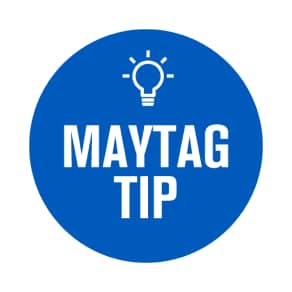
WHAT DO DRYER SHEETS DO?
Dryer sheets work to eliminate static cling, help make your clothes softer to the touch and can infuse a fresh scent. One of the top benefits of dryer sheets is the ingredients that help tackle and neutralize the effects of built-up static in clothes. This can help prevent certain clothes in your dryer, like socks and sweaters, from sticking together due to excess static electricity.
Dryer sheets may be a good addition to your laundry day. Learn the science behind how they work, when to use them and how they can help improve your laundry routine.


HOW DO DRYER SHEETS WORK?
Dryer sheets work by helping to make laundry feel softer to the touch and reducing static. Tumble drying makes clothes rub against each other, which can result in the build-up of static electricity that makes your sweaters and socks cling together. Dryer sheets also transfer softeners and scents into your fabrics when released by the heat of the dryer.
THE SCIENCE BEHIND DRYER SHEETS
Dryer sheets balance the positive and negative electrons in your fabrics that cause them to stick together. The composition of dryer sheets helps neutralize this attraction and guard against excess static in most fabrics. Dryer sheets contain liquid softeners, fragrances and lubricants. When placed in your dryer, the heat warms and releases these ingredients into the fabric of your laundry.
SHOULD I USE DRYER SHEETS FOR ALL OF MY LAUNDRY?
No, certain fabrics respond better to dryer sheets than others. Dryer sheets are best used in laundry loads filled with items made of natural fibers like cotton shirts, pants and socks. Athleticwear and microfiber, towels, flame-resistant clothing and water-repellent fabrics shouldn’t be placed in a dryer with dryer sheets. Always check the care label on each item before placing it in the dryer.
Avoid using dryer sheets on the following materials:

Athleticwear & Microfiber
Using dryer sheets may leave behind a coating that interferes with the moisture-wicking technology of these fabrics.

Towels
Though using dryer sheets on towels may seem like a natural fit, the softeners can reduce the absorbency of the fabric, hindering its ability to soak up water.

Flame-Resistant Clothing
Items like kids’ sleepwear are flame-resistant for safety, but the softeners in dryer sheets may coat the fibers, reducing their ability to self-extinguish.

Water-Repellent Fabric
Softeners used in dryer sheets can prevent these fibers from repelling water as designed, impacting their effectiveness. Avoid use when washing windbreakers, jackets and other water-repellent items.

WHAT ARE NATURAL, ALLERGY-FRIENDLY ALTERNATIVES TO DRYER SHEETS?
If you have fragrance or dye allergies, be aware that some dryer sheets could cause adverse skin reactions in those with sensitivities.
Dryer balls may be a good choice for those with allergies because they are often made of wool and are widely available in an unscented form.


HOW DO I USE DRYER SHEETS?
Dryer sheets work with both gas or electric dryers. Simply place a new dryer sheet on top of your laundry load at the start of a dryer cycle. Be sure to use the right amount to avoid a build-up on your clothes and appliances. Always reference the product packaging before use.
Avoid overloading your dryer with laundry, as this can trap dryer sheets in one place and cause staining from the softener melting directly onto clothes for a prolonged period of time. Make sure that your laundry is able to tumble freely and always remove the used dryer sheet after every load.
Learn about other fabric softener options or dryer balls to help determine which is best for your laundry routine. For even more suggestions, read about how to do laundry.
DO DRYER SHEETS NEED HEAT TO WORK?
Yes, most dryer sheets need heat to work effectively. They contain liquid softeners and fragrances that are released in the dryer heat and transferred to your fabrics, making your clothes feel softer.
DO YOU NEED TO USE BOTH FABRIC SOFTENER AND DRYER SHEETS?
It’s not necessary to use fabric softener and dryer sheets in the same laundry load since dryer sheets contain fabric softener and provide very similar benefits. The ingredients in dryer sheets transfer to fabrics, helping to make them softer and more fragrant when you take them out of the dryer.
WHAT ARE OTHER USES FOR DRYER SHEETS?
Dryer sheets are multifunctional and can come in handy for various reasons. These 4 tips will help you utilize dryer sheets outside of the laundry room.
- Tackle deodorant marks
Repurpose a used dryer sheet by rubbing it against a deodorant stain on your clothes to help remove troublesome white stains. - Stop static on the go
Wiping a dryer sheet along the interior of a shirt can help eliminate excess static cling. - Freshen up spaces
Slip dryer sheets in shoes, sock drawers or gym bags to quickly and easily deodorize. - Dust with them
Wipe window blinds, shelves or your car dashboard with a dryer sheet to collect dust and pet hair.

ALWAYS CLEAN YOUR LINT FILTER AFTER EVERY LOAD
Dryer sheets can leave an oily residue on your dryer and may clog the screen of the lint filter faster, reducing circulation and causing a potential fire hazard.
In addition to cleaning your lint filter after every load, a more thorough washing once a month is recommended to remove this build-up.
To deep clean your lint filter, remove and wet both sides of the screen with hot water. Next, wet a nylon brush with hot water and liquid detergent and gently scrub the screen. Rinse the screen thoroughly with hot water until the water runs clean, pat dry with a towel and air dry completely before replacing it in the dryer.
Discover Maytag® Dryers with Wrinkle Prevention
Keep wrinkles at bay with select Maytag brand dryers. Select models run for up to 150 minutes after the cycle has ended to prevent wrinkles from forming.
